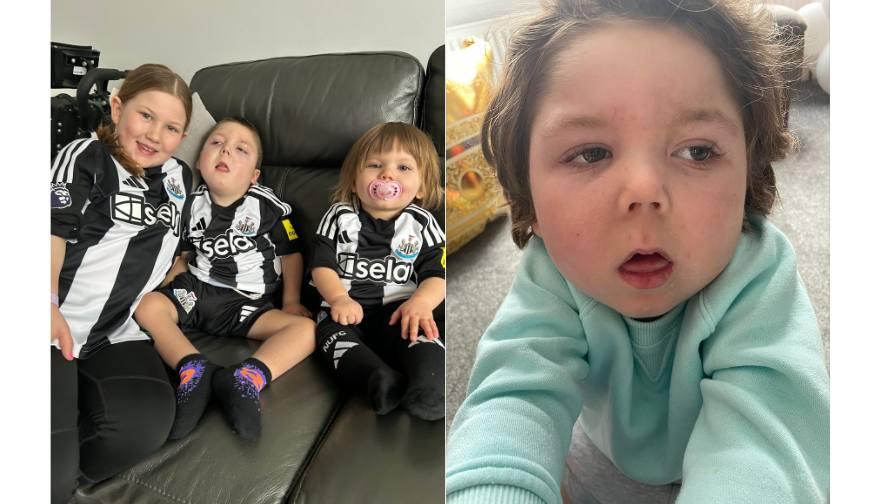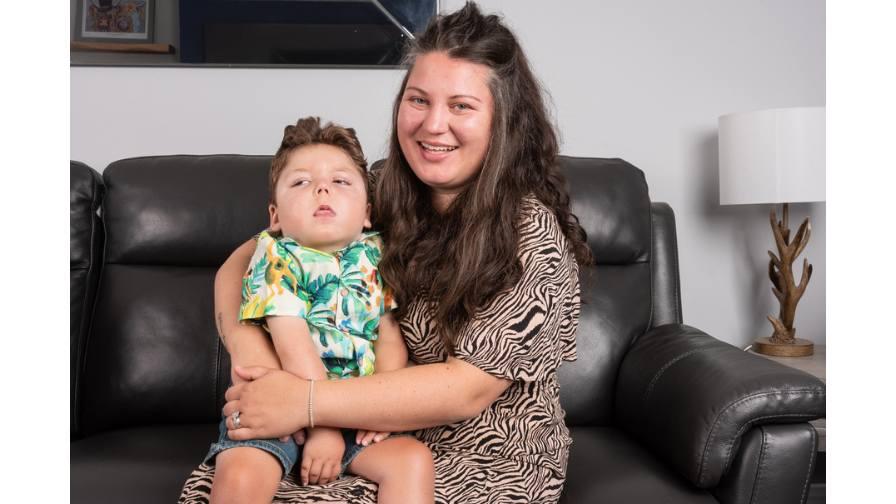Five-year-old Paddy has a rare form of epilepsy called KCNT1-related epilepsy and experiences as many as four to five seizures an hour and is severely disabled.
Faults in the KCNT1 gene can cause severe neurological conditions in children known as KCNT1-related epilepsies. There are currently no effective treatments and children like Paddy endure repeated seizures every day, as well as delayed development, learning difficulties and behavioural or movement problems. They are often left with severe disabilities, and many lose their lives at a young age.
Results of new research could lead to safe and effective new medicine to help control seizures and prevent brain damage, offering hope to children and families impacted by these rare and devastating conditions.

Faults in the KCNT1 gene make the KCNT1 protein overactive, which leads to abnormal electrical activity in nerve cells resulting in seizures and other symptoms. Researchers at the University of Leeds combined computer analysis with laboratory work to screen millions of different chemical compounds before carrying out tests on those predicted most likely to be effective. Around 35 of the chemicals tested in the lab reduced the activity of the KCNT1 protein and showed promise as a potential treatment. These results could provide the springboard to developing new treatments that block the action of the KCNT1 protein and thereby reduce the frequency of seizures.
Lead investigator Dr Jonathan Lippiat, Lecturer in Pharmacology at the University of Leeds, says: “Our key outcome is a toolkit of compounds, providing a range of starting points for developing treatments. These results show that including computational approaches in drug discovery, saving both time and money, has huge potential – and is one that could be applied to many other ultra-rare diseases, so increasing the potential for pharmaceutical development.”
Catherine Holliday, Paddy’s mum says: “We are pleased about the results of the research. Paddy is now five and we know that every day that we have with him is a gift. He has started school and even though he is responding to stimuli, he still has up to four or five seizures an hour."
If this research leads to a new treatment, then Paddy could have fewer seizures – this would make such a big difference to him and us as a family.

Catherine explains that even though school has been a positive experience for Paddy, the family still have many challenges: “Since November 2024 Paddy has been using a CPAP (continuous positive airway pressure) machine at night to help with his breathing. He also has scoliosis which has become more noticeable. There is not much that can be done for him, so we have had to get a special bed and we will be adapting our house so that we can have a wheelchair for him,” explains Catherine.
Dr Caroline Johnston, Senior Research Manager, Action Medical Research says: “We are pleased with the results which highlight our commitment to funding early stage, innovative research which takes us a step closer to being able to develop a treatment to help children with KCNT1-related epilepsy.”
